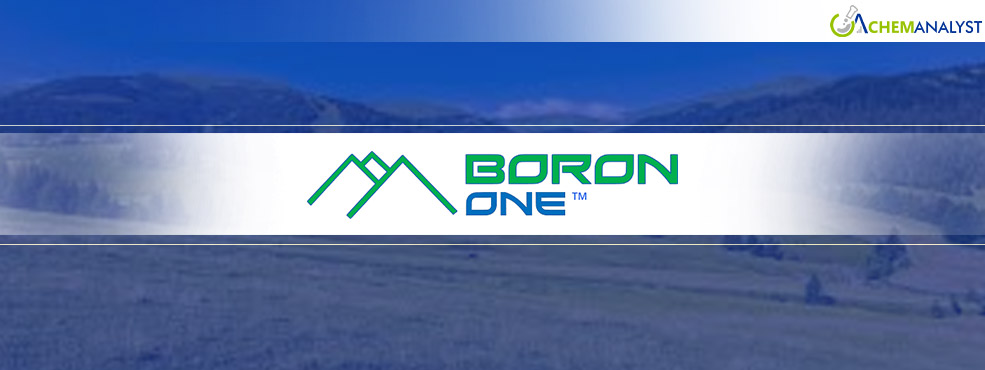Welcome To ChemAnalyst

Boron One Holdings Inc. announced the successful completion of its 2024-25 geological exploration program in Serbia’s Jarandol Basin, conducted by its wholly owned subsidiary, Balkan Gold d.o.o. The results have been compiled into an annual report and submitted to Serbia’s Ministry of Mining.
The three-year exploration initiative focuses on identifying borate and associated mineral resources within the Jarandol Basin, located to the west and north of Boron One’s Piskanja borate deposit. This year’s objectives included delineating sedimentary zones potentially rich in genetically related raw materials such as magnesite, zeolites, cement marl, and bentonites. The program also aimed to analyze known borate mineralization, first discovered by the company in 2015, and identify new zones of mineralization in the central and western parts of the basin.
As part of the current phase, Balkan Gold reambulated the 1:10,000 geological map and conducted surface prospection within the approved exploration area. A total of 60 observation points—comprising outcrops, blocks and boulders—were assessed. From these, 56 samples were collected for petrological testing and 56 for chemical analysis. The samples included andesite, tuffs, volcanoclastics, sandstones, carbonates, conglomerates, and clastites.
Petrological analyses, including X-ray diffraction (XRD) and thermogravimetric/differential thermal (TG/DT) studies, were carried out by the Department of Petrology and Geochemistry at the University of Belgrade’s Faculty of Mining and Geology. ALS Laboratory in Tasmania was engaged for chemical analysis, using ME-MS41 and ME_XRF26 methods for multi-element and oxide testing.
“We are pleased by this recent progress,” said Tim Daniels, president of Boron One. “Based on our historical work and the fact that we’ve explored less than 10% of the basin, we believe the Jarandol Basin holds significant potential to expand the known boron resource base in the region. We look forward to continuing this development alongside our flagship Piskanja Project.”
Earlier exploration programs suggest the basin could host extensions of the Piskanja deposit and the nearby Pobrdje boron mine, located about 2.5 kilometers away. A prior drill program between these sites yielded six exploratory holes, three of which intersected borate mineralization that met Boron One’s economic thresholds. Notable results included borate layers of 1.88 meters averaging 41.33% B2O3, 1.3 meters averaging 41.88% B2O3, and 1.75 meters at 39.71% B2O3, as previously disclosed in December 2015.
The Jarandol Exploration License, granted in April 2024, is valid for an initial term of three years and may be extended for up to eight years in total, in accordance with Serbian mining regulations. Covering an area of 21.03 square kilometers, the license encompasses the entire portion of the Jarandol Basin deemed prospective for boron mineralization. This includes land situated directly between and adjacent to Boron One’s wholly owned Piskanja Boron Project, located on the basin’s eastern edge, and the state-owned Pobrdje Boron Mine, situated approximately 2.5 kilometers to the west.
We use cookies to deliver the best possible experience on our website. To learn more, visit our Privacy Policy. By continuing to use this site or by closing this box, you consent to our use of cookies. More info.
